1- Ganga Aarti in Haridwar
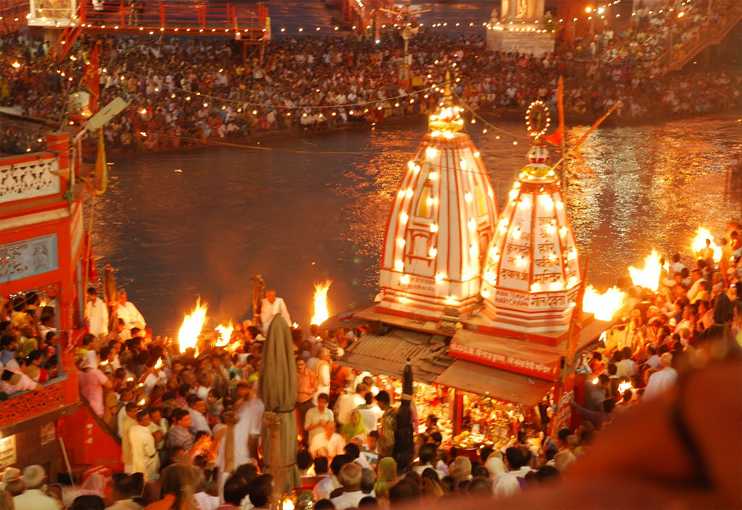
Ganga Aarti, Haridwar Overview
Ganga Aarti is a religious prayer that takes place at the bank of the sacred river Ganga at the Har Ki Pauri ghat in Haridwar. Bringing in tourists and devotees from all over the world, it is a ritual of light and sound where the priests perform prayers with bowls of fire and the ringing of the temple bells. Visitors float "diyas" (small candles) and flowers, surrounded by the chanting of the mantras and the reflection of the lights off the surface of the flowing river, which is said to be blessed by the Goddess Ganga.
2- Har Ki Pauri

Har Ki Pauri, Haridwar Overview
Regarded as one of the most sacred Ghats in Haridwar and India, Har Ki Pauri is a revered landmark and is visited by devotees and visitors in large number seeking the blessings of Holy Ganga by offering their prayers. Har Ki Pauri which literally translates to 'Steps to Lord Shiva' is situated in the holy city of Haridwar which is considered as one of the seven holiest places in the country. A dip in the river Ganges here is believed to wash away one's sins and according to the Indian mythology, it is one of the four places where the drops of elixir ('Amrit') were accidentally spilled by the celestial bird Garuda. The river is filled in a golden hue of countless diyas offered by devotees floating along the river.
Har Ki Paudi is the place where River Ganga flowing through the Himalayas touches the plains for the first time. Oozing serenity and calm all the time, it is the evening time at Har Ki Pauri that is most cherished by its visitors. With a plethora of temples at the river bank, offerings are made with lighted candles and diyas floating across the river, an enchanting sight to behold. The chanting of mantras and prayers with sages meditating exudes spiritual vibes and is an experience of a lifetime. The sound of gongs in the background takes one to an entirely different world. Lord Shiva and Lord Vishnu are believed to have visited the place in Vedic times. The large footprints on a stone wall are said to belong to Lord Vishnu.
3- Chandi Devi Temple
_20171030190649.jpg)
Chandi Devi Temple, Haridwar Overview
The Chandi Devi Temple of Haridwar is a charming temple dedicated to the Chanda Devi Goddess, perched on the Neel Parvat of the Shivalik Hills. The Chandi Devi Mandir, also known as Neel Parvat Teerth, is one of the five pilgrimages of Haridwar and is also known as Siddha Peetha, a place where devotees worship to fulfil their desire. Because of its location, the Chandi Devi temple is also a preferred choice for trekking tourists. You can also reach the temple zenith by the means of a ropeway, the view from which is exhilarating.
The historic beauty of Chandi Devi Temple is best experienced as you hike your way up to the top. With the verdant greenery of the surrounding, you will certainly feel the presence of the divine around you. Being one of the oldest and revered temples in Haridwar, this shrine has a tremendous footfall throughout the year. One of the most festive time here is during the festivals of Chandi Chaudas, Navratra and Kumbh Mela when the temple sees amazing celebrations and massive participation. The Chandi temple during the festival time is a must visit.
4- Rajaji National Park
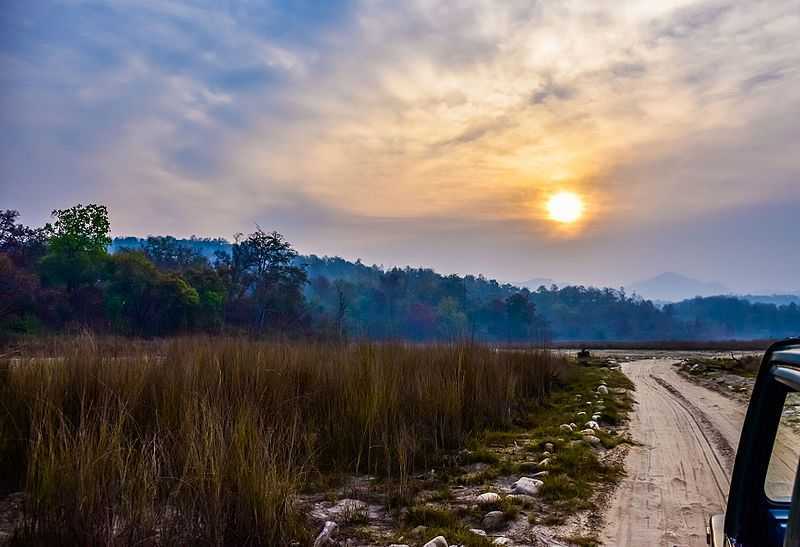
Rajaji National Park Tourism
Encompassing the Shivalik mountain ranges, Rajaji National Park is abundantly rich in flora and fauna and proves a great holiday destination for nature lovers and wildlife enthusiasts alike.
Famous for its wildlife, especially for tigers and elephants, Rajaji National Park has recently received the status of a Tiger Reserve by the Government of India. Named in the honour or C. Rajagopalchari, this national park spreads over 3 districts of Uttarakhand including Dehradun, Haridwar and Pauri Garhwal. This area is also enriched with valuable fossils which date back to as old as 10 million years old. The forest area is popular for Sal, Teak and other shrubs. You should explore the wilderness and rich diversity of Himalayan lives here with a Jeep Safari or Elephant Safari organised by the Forest Department, the 34 km jungle track is a major attraction here. You can spot Asian Elephants, Tiger and King Cobra, Panther, Bear, Chital, Sambar, Wild Boar, Kakar, Python, Monitor Lizard, Wild Cats.
You can also spot many birds including many species of migratory birds, especially after monsoons.
5- Mansa Devi Temple, Haridwar
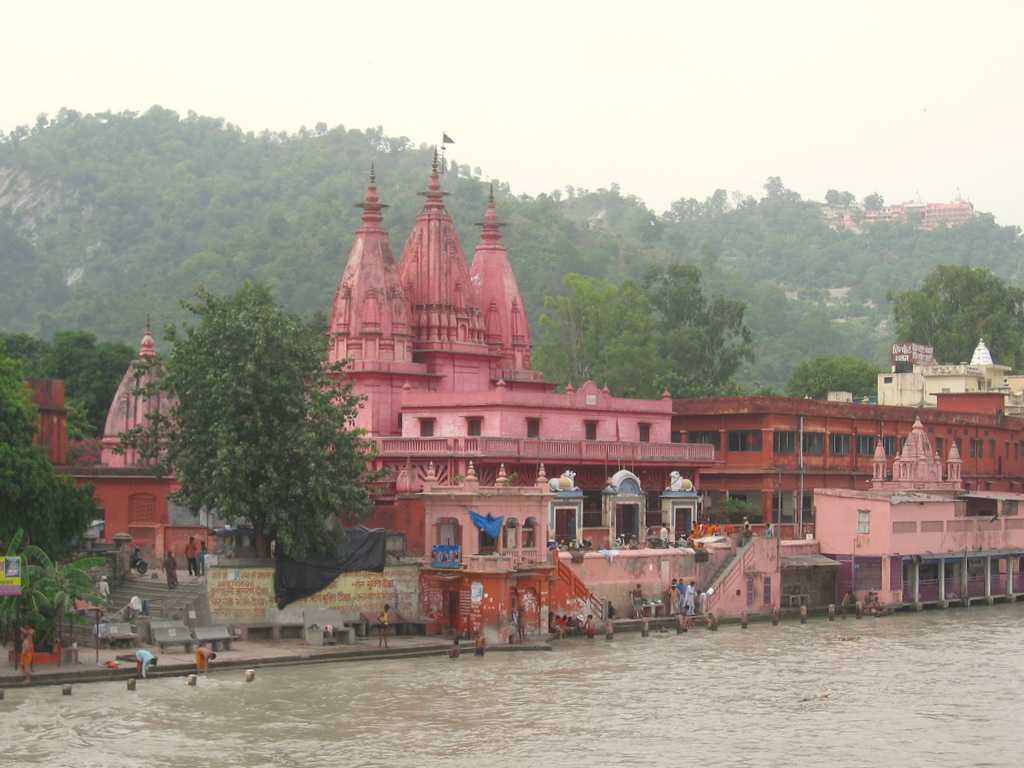
Mansa Devi Temple, Haridwar Overview
The Mansa Devi Temple is a famous temple in Haridwar in Uttarakhand that is dedicated to the goddess Mansa Devi, who is considered to be a form of Shakti and is believed to have emerged from Lord Shiva's mind. Thousands of Hindus flock to the temple every year in large numbers to this temple, which is one of the 'Panch Tirths' or the five pilgrimages in Haridwar. The temple is also popularly known as Bilwa Tirth and is perched on the top of the Bilwa Parvat on the Sivalik Hills.
The word Mansa means wish, and devotees firmly believe that the goddess Mansa fulfils all the wishes of a dedicated and sincere person who visits the temple. Thus, the magnificent temple is regarded as a 'Siddh Peetha', which is the term that is used to refer to places where desires and wishes get fulfilled. Together with the Maya Devi Temple and Chandi Devi Temple, the three temples constitute the three Peethas that are located in Haridwar.
The Mansa Devi Temple holds immense religious importance, not only because of the temple itself but also because it is located in Haridwar, which is believed to be one of the four places where drops of elixir fell accidentally while they were being carried by Garuda, Lord Vishnu's vehicle. This is perhaps why this grand temple has one of the highest footfalls of all temples in north India. The ropeways that lead up to it are yet another feature that adds to the magnificence of the temple and attracts tourists from all across the country.
6- Bharat Mata Mandir Haridwar
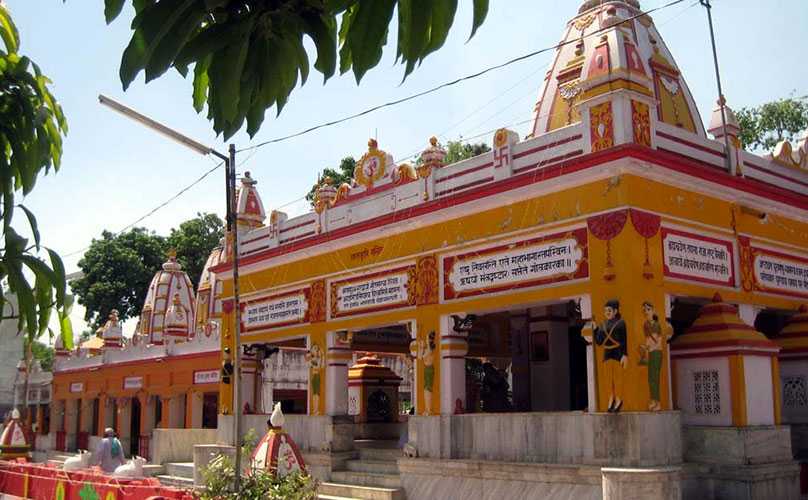
Bharat Mata Mandir, Haridwar Overview
The Bharat Mata Mandir in Haridwar is dedicated to India as a country and thereby gets its name from its purpose. Its name translates into "The Moth India Temple". The multi-storey temple situated in Sapt Sarovar is not a temple that worships gods or has any religious inclination, but one that stands for the many freedom fighters and patriots of the Indian Struggle for Independence. The majestic temple Bharat Mata Mandir also celebrates the unique trait of India and its immense culture. The oneness of the country and its diversity are also a few aspects that the Bharat Mata Mandir brings to our attention.
The late Indian Prime Minister Indira Gandhi inaugurated the Bharat Mata Temple in 1983. The temple stands at a height of 180 feet and has a total of 8 floors with a specific theme. The temple has a massive map of the Mother India on the ground, denoting the statue of the mother of India depicted as a four-armed Hindu goddess wearing saffron-coloured robes, holding a book, sheaves of rice, a mala, and a white cloth. The statue has a design that indicates the Goddess of India for all the religious deities, freedom fighters and leaders. The Bharat Mata Mandir in Haridwar is dedicated to all those who took part in the formation of India as it was built before the partition of India. Elevators are installed in the temple to aid the pilgrims.
7- Vaishno Devi Temple, Haridwar
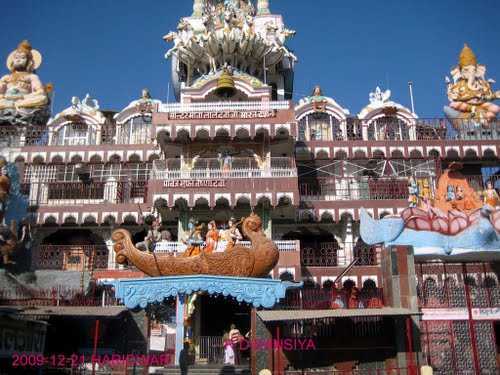
Vaishno Devi Temple, Haridwar Overview
A replica of the Vaishno Devi temple in Kashmir, the Vaishno Devi Temple of Haridwar is marked by tunnels and caves that lead to the inner sanctum containing the shrine of Goddess Vaishno Devi. The divine temple houses three deities - Lakshmi, Kaali and Saraswati. The Vaishno Devi Temple in Haridwar is a frequently visited site, both by religious devotees and nature lovers because of the stunning view of the surrounding landscape.
Apart from its architecture and tunnels, this temple bears no resemblance to the original Vaishno DeviTemple. After climbing a flight of steep stairs and crawling through a narrow tunnel, the devotees are blessed with the sight of the idol of Maa Vaishno Devi and the replicas of the 12 Jyotirlingas in India. It is widely believed that the Vaishno Devi Temple of Haridwar was constructed in the memory of Trikuta, a devotee of Lord Ram. She prayed to him so devotedly that he agreed to marry her in his last earthy carnation. This is also one of the Shakti Peethas temple.
8-Daksha Mahadev Temple
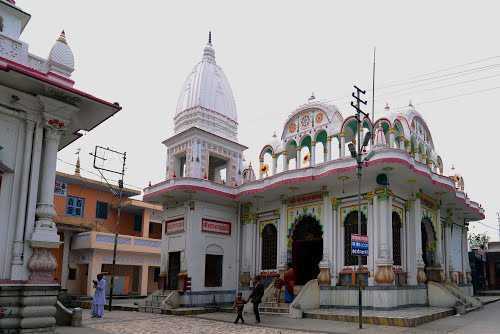
Daksheswara Mahadev Temple, Haridwar Overview
Located in Kankhal in Haridwar, Daksha Mahadev is one of the oldest temples and a prime place of pilgrimage for Shaivites. The chief deity of the temple is Lord Shiva and Goddess Sati. The temple is named after King Daksha Prajapati, the father of Goddess Sati. Also known as Daksheswara Mahadev Temple, it houses the Yajna Kund and the Daksha ghat on the left of the main temple where devotees take a dip in the holy Ganga River. The temple is also known for its pompous Shivratri celebrations.
Daksha Mahadev Temple is widely famous among the devotees of Lord Shiva and lakhs of devotees gather around the temple every year. The rush gets heavier during the month of Sayan. Apart from Yajna Kund in one part of the temple, there is another part where a Shiv Linga has been installed. The walls of Daksheswara Mahadev temple depict the various episodes of the yajna story of King Daksha and the entire history of the temple. The temple premises also has a very banyan tree, which is thousands of years old.
9- Shanti Kunj Haridwar
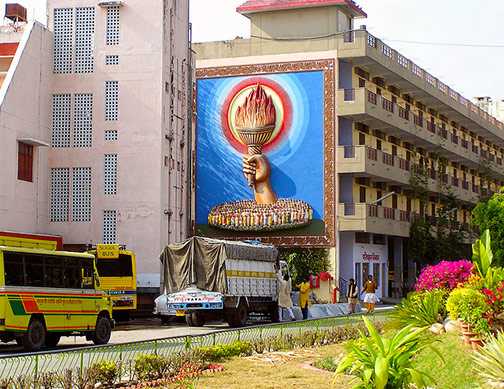
Shantikunj, Haridwar Overview
Shantikunj is a world-renowned ashram and the headquarter of All World Gayatri Pariwar (AWGP) located in Haridwar. An academy for social and spiritual awakening, this pilgrimage centre has shown the right path and given long-lasting happiness to crores of people. An ideal place which imparts training to the masses based on divine spiritual principles, it aims for the revival of Rishi traditions.
Development of divinity in mankind is the foremost goal and avowed objective. The Shantikunj ashram has Yagya shala, Gayatri Mata Temple, Akhand Deep, Devatma Himalaya Temple, temples of ancient Rishis and Exhibition of Divine Culture. Besides visiting these places, you can also participate in the daily activities of the ashram. Various training camps are also organised for the upliftment of moral and spiritual values. Those seeking inner peace and divine inspiration, Shanti Kunj is the place to be.
10- Patanjali Yogpeeth Haridwar
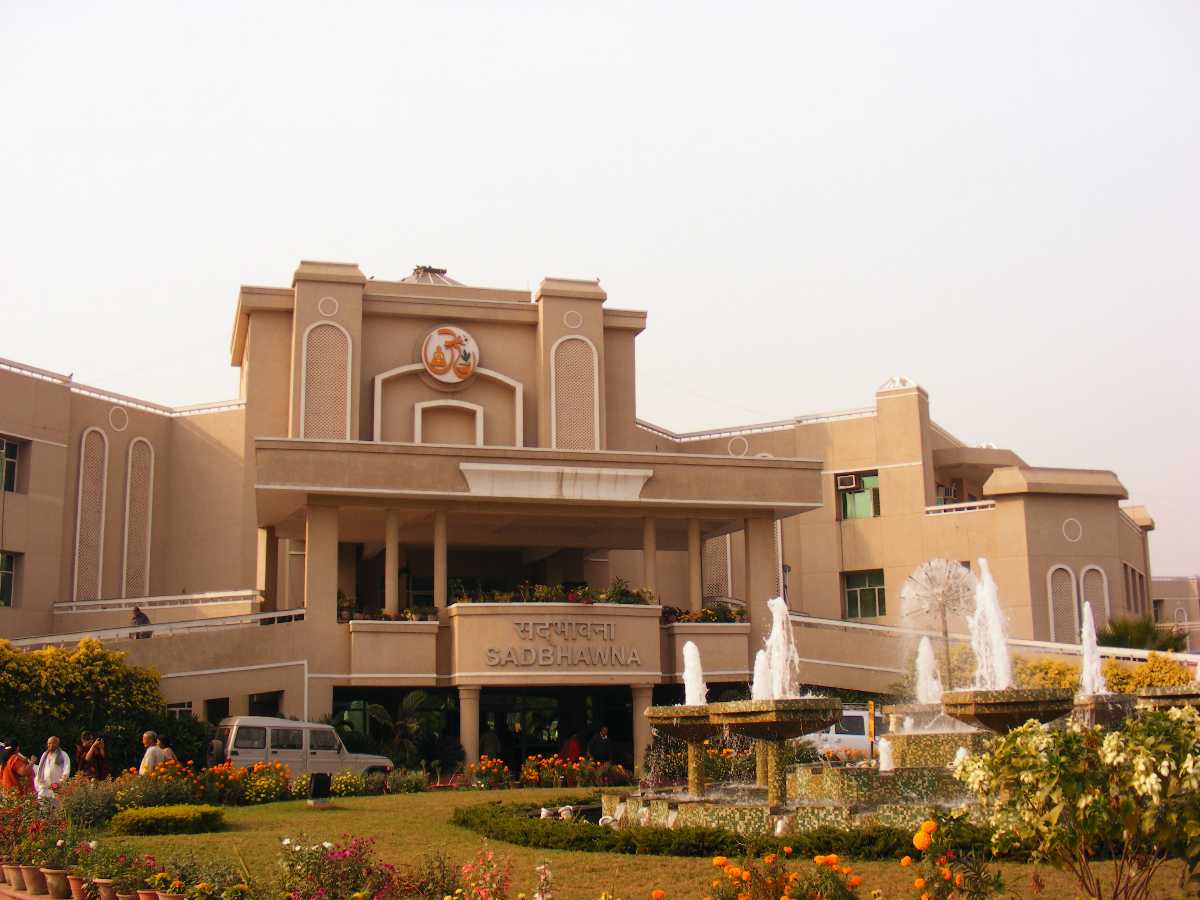
Patanjali Yog Peeth, Haridwar Overview
Patanjali Yogpeeth is a medical and research institute in Yoga and Ayurveda, located in Haridwar, Uttarakhand. It is also renowned as one of the largest yoga institutes in India as well as in the world. The institute is named after Rishi Patanjali, who is acclaimed for the invention of Yoga and is Baba Ramdev's flagship project. If one is interested in Ayurveda and Yoga, it is one of the finest places to visit in Haridwar.
The institute was established by him in 2006 for the practice and development of yoga and research on ayurveda and manufacture of Ayurvedic medicines. People visit the Patanjali Yogpeeth for Ayurvedic treatments and medications. It is run by Patanjali Yogpeeth Trust, UK. Apart from Ayurvedic treatments, there are laboratories dedicated to study and research, canteen, ATM as well as residential accommodation. The Patanjali Yogpeeth comprises of two campuses: Patanjali Yogpeeth I and Patanjali Yogpeeth II. They collectively carry out welfare activities in the field of health care, education and other socio-economic activities.